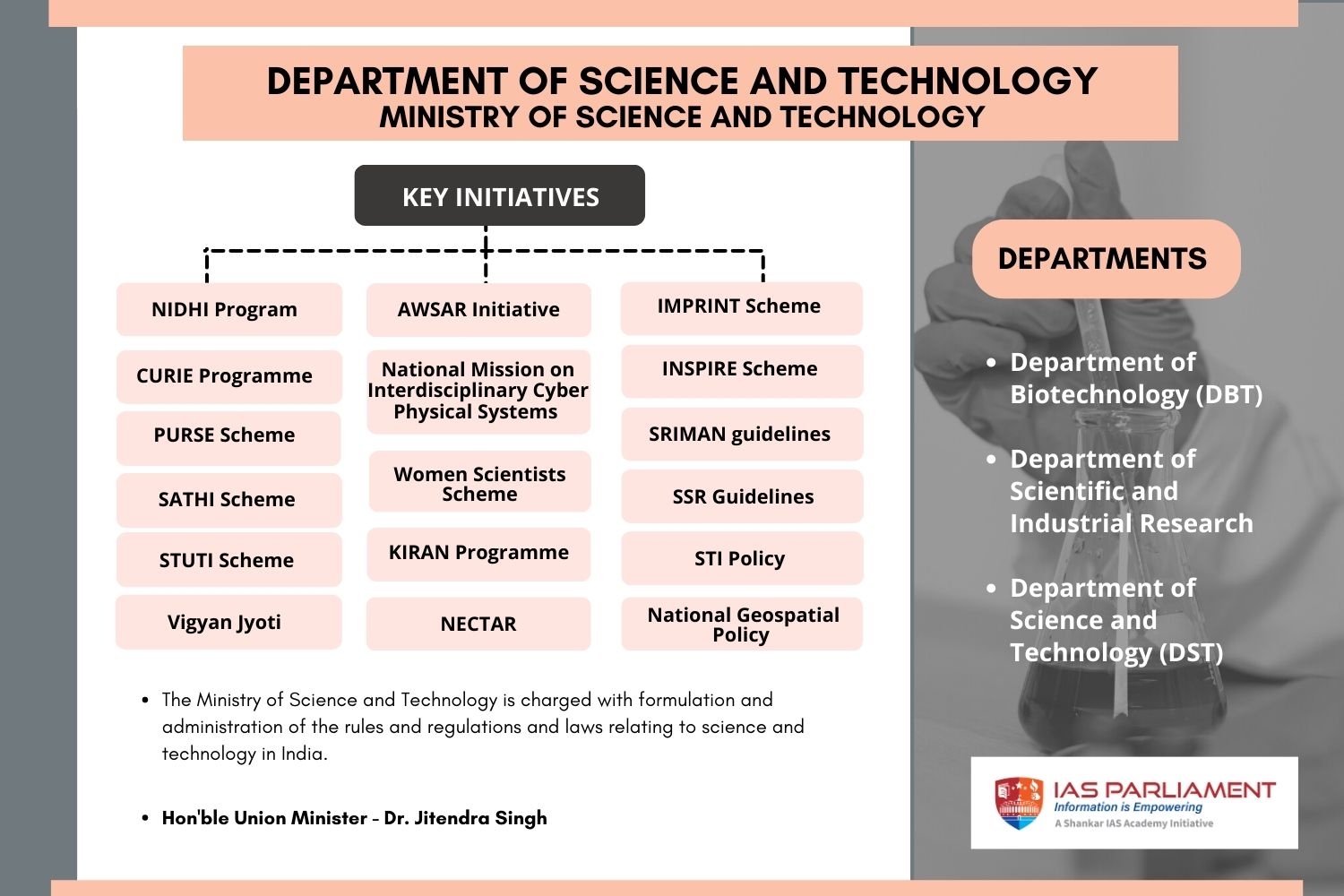900 319 0030
enquiry@shankarias.in

1. Start-Up and Innovation Ecosystem
2. Technology Development in Cyber physical Domains
3. International S&T Engagement
4. Geospatial Data
Survey of Villages and Mapping with Improvised Technology in Village Areas’ (SVAMITVA) Scheme
5. Technology Commercialization
6. Scientific Infrastructure
7. Tech-Led Solutions for Energy and Environment Challenges
8. Career Opportunities for Women Scientists
9. Attracting the Talents to pursue their Career in Science
10. Conserving the Heritages through Digital Technologies
11. Augmenting Research Capabilities
12. Policy Formulations
MAJOR ACHIEVEMENTS DURING THE LAST 9 YEARS
Global Innovation Index (GII) 2022
To know about Part-2, click here
References